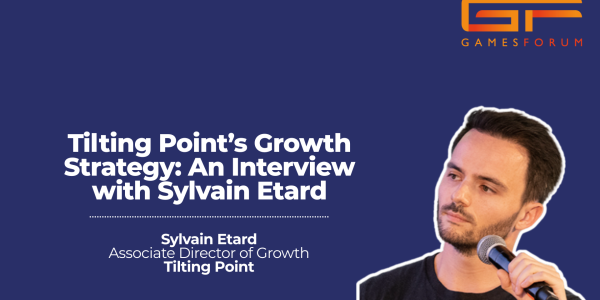Mobile Gaming in MENA: Growth, Trends, and a Future Outlook

The Middle East and North Africa region has catapulted into the spotlight as a formidable force in the mobile gaming industry, showcasing unparalleled potential and breakneck development. In fact, mobile gaming is currently the region’s major game industry growth driver. Leading this charge are the UAE and Saudi Arabia - both pivotal markets are turbocharging the mobile gaming boom. With cutting-edge technology, a dynamic youth population, and escalating disposable incomes, these nations are not just participating but are at the epicenter of a gaming revolution. Their influence is propelling the entire region forward, making MENA a hub of innovation and growth in the global mobile gaming arena.
Gamesforum delves into the current state of mobile gaming in the region, exploring market size, growth trends, and the factors propelling this industry forward, with insight from industry leaders.
The current mobile gaming market in MENA
With skyrocketing adoption of high-speed mobile internet and abundant gaming hardware, MENA's premier markets - Egypt, the UAE, and Saudi Arabia - are set to captivate gamers across consoles, PCs, and mobiles. By 2027, these markets could amass nearly 80 million users. Saudi Arabia, in particular, identifies mobile gaming as the sector with the most explosive growth potential. This surge has ignited a thriving ecosystem for players, developers, publishers, and esports organisations.
In recent times, mobile gaming has surged past console and PC gaming to become the most popular form of gaming in the Middle East. Why? Nearly everyone has a smartphone loaded with games. Technological advancements like AR, VR, cloud gaming, and 5G have fueled this growth. The mobile game industry thrives on such innovations.
Smartphone subscriptions are a major driver of this market. As more people get smartphones, the potential user base for mobile games expands. Unlike traditional gaming consoles or PCs, smartphones are more accessible and affordable, making them the primary gaming platform for many in the region. This broader audience boosts demand and market growth. According to Ericsson, smartphone subscriptions in GCC countries reached 65 million in 2022 and are expected to hit 73 million within five years. This booming user base spells tremendous growth for mobile gaming in the Middle East.
Growth trends in MENA’s mobile gaming scene
According to Niko Partners' recent survey results, the top three most played games in the MENA-3 region - PUBG, EA Sports FC, and Call of Duty - are enjoyed by two-thirds of all gamers. Data fromApptica also shows that Candy Crush Saga, Subway Surfers, and Yalla Ludo are ncredibly popular mobile gaming apps in the region.
Countries in the region have become fertile grounds for mobile gaming, driven by young, tech-savvy populations and robust government support. Notably, Dubai has introduced a groundbreaking Gaming Visa as part of its vision to become a global gaming hub by 2033. This initiative, spearheaded by Crown Prince Hamdan bin Mohammed bin Rashid Al Maktoum, aims to attract 30,000 game developers and significantly boost the local economy by adding approximately $1 billion to the GDP. The visa targets game developers, designers, programmers, and content creators, offering them long-term residency and various professional opportunities.
Jordan is seeing a surge of popularity in mobile gaming, driven by a young, tech-savvy population. In fact, the mobile games market in Jordan is projected to reach a revenue of US$48.00m by 2024, reaching a total of 2.1m users by 2027.
Egypt is another key player in the MENA region, and has also shown significant growth. With a burgeoning population of over 100 million, the country has seen its mobile gaming sector grow by 25% annually, supported by increasing smartphone adoption and improvements in internet connectivity.
Increasing smartphone penetration
How does one explain the ubiquitous presence of smartphones in the MENA region? In the UAE and Saudi Arabia, smartphone penetration rates exceed 90%, among the highest globally. This widespread adoption is not merely a statistic but a testament to the region's rapid digitalisation. The proliferation of affordable smartphones has made gaming accessible to a broad audience, transforming casual players into a significant market segment.
Gaming preferences and habits
The gaming habits and preferences in the MENA region are shaped by diverse demographics and cultural nuances, according to reports. Understanding these preferences provides valuable insights into the region’s vibrant mobile gaming market.
Youth and teenagers
Young people and teenagers form the core of the gaming demographic in the MENA region. This group is particularly drawn to competitive and interactive games. Titles like PUBG Mobile and Fortnite are immensely popular among this age group due to their engaging multiplayer modes, high-quality graphics, and the thrill of competition. These games also offer social interaction, allowing players to connect with friends and strangers worldwide, enhancing the social aspect of gaming. The competitive nature and frequent updates of these games keep young players engaged and coming back for more.
Young adults
Young adults, typically aged between 20 and 30, prefer games that offer strategic depth and long-term engagement. Clash of Clans and Call of Duty: Mobile cater to this demographic by providing complex gameplay mechanics and continuous updates. These games require strategic thinking and offer a sense of progression, which appeals to the more mature audience within this age group. The combination of strategy and action in these games satisfies the young adults' desire for challenging and rewarding gaming experiences.
Female gamers
The number of female gamers in the MENA region is on the rise, with many drawn to casual and puzzle games. Candy Crush Saga and Ludo King are favourites among women gamers. These games also offer a social component, as players can compete with friends and family, making them popular among women looking for light-hearted entertainment and social interaction. The accessibility and social aspects of these games are key factors driving their popularity among female gamers in the region.
What about monetisation?
Monetisation remains a critical challenge for mobile game developers in the MENA region. The diversity in payment systems and the reliance on cash transactions pose significant barriers. While global platforms like Google Play and Apple App Store offer in-app purchases, many players in the region prefer alternative payment methods, such as carrier billing or e-wallets, due to limited access to credit cards.
Moreover, the high transaction fees associated with some payment methods can erode profit margins for developers. To cater to local preferences, companies often need to integrate multiple payment gateways, adding to the complexity and cost of doing business. The lack of a unified payment infrastructure complicates the monetisation strategy, making it challenging to maximise revenue potential.
What's next for MENA?
Tech innovation and cultural adaptation define the mobile gaming scene in MENA

In the MENA region, mobile gaming is booming due to increased smartphone penetration and tech-savvy population. Some trends I have noticed include the rise of localised content, with games tailored to regional cultures and languages gaining popularity, mobile games evolving into social platforms, fostering community interaction and engagement over everything else and the adoption of advertising formats which do not disrupt gameplay or provide a better value exchange in comparison to traditional ad formats. These trends highlight a dynamic and rapidly growing mobile gaming market, driven by technological innovation and cultural adaptation.
- Wilfrid Obeng, Co-founder, CTO, Audiomob
The region has a unique passion for gaming that is only growing
In terms of game development, we see a shifting power dynamics: Saudi Arabia's growing investment in the gaming industry, coupled with the UAE's recent plans are significantly challenging Jordan's current lead in the region. We see an increasing number of studios and publishing offices being open in these countries.
However, the starting position is very low, and the current gaming ecosystems are still in the nascent stages and will take some time for it to fully develop. We are aiming to accelerate it by recently starting a JV with one of the gaming titans from the East, NetEase. In summary, the region has a great deal of passion for gaming, so my hopes are very high.
Regarding mobile players in the region, we observe growing interest from major publishers, especially from the East, due to the promising growth rate, high platform penetration, and affluent player base in the GCC countries.
- Ratko Bozovic, VP of Marketing, Sandsoft
Abu Dhabi emerges as a thriving hub for gaming innovation and industry growth
While I can't speak for the entire MENA region, I recently moved to Abu Dhabi, brought here by Hub71, and I can see significant ecosystem development happening here. Gaming is becoming a major focus for the region, and there's access to capital at all stages, government support, education, healthcare, and talent. The lifestyle, including amazing food, adds to the appeal. Abu Dhabi is poised for major growth in the gaming sector. There's a strong push for innovation and technology, and the government is highly supportive of the gaming industry. The education system is evolving to provide the necessary skills, and there's a focus on creating a vibrant community for gaming professionals. Every gaming industry person I talk to is eager to learn more about the region, and once they visit, they want to live here and be part of it.
- Christian Calderon, Co-founder and CEO, Superfine
Hyper-casual, eSports, and increased localisation are key trends
The mobile gaming market in the MENA region is experiencing significant growth, driven by a substantial increase in smartphone penetration, with rates ranging from 70% to over 90%. This surge is expanding the potential user base, making the region a lucrative market for developers. Key trends I've noticed also include the rise of hyper-casual games, known for their accessibility. There is also an increasing emphasis on localization and culturalization, with developers incorporating Arabic language support and culturally relevant themes to enhance engagement. The growth of eSports and competitive gaming, bolstered by expanding infrastructure and investment, along with the integration of AR and VR technologies, is also creating new opportunities for immersive experiences.
- Ravi Dutt, Founder of The GenX media











